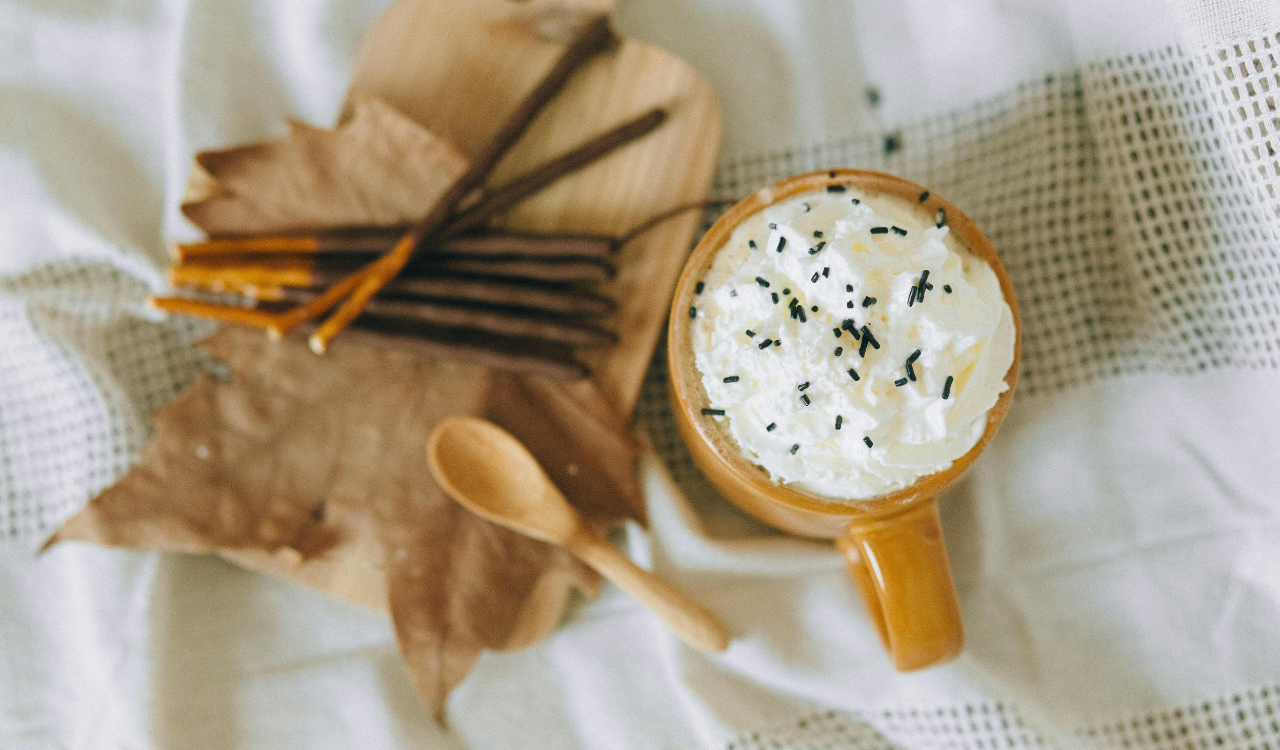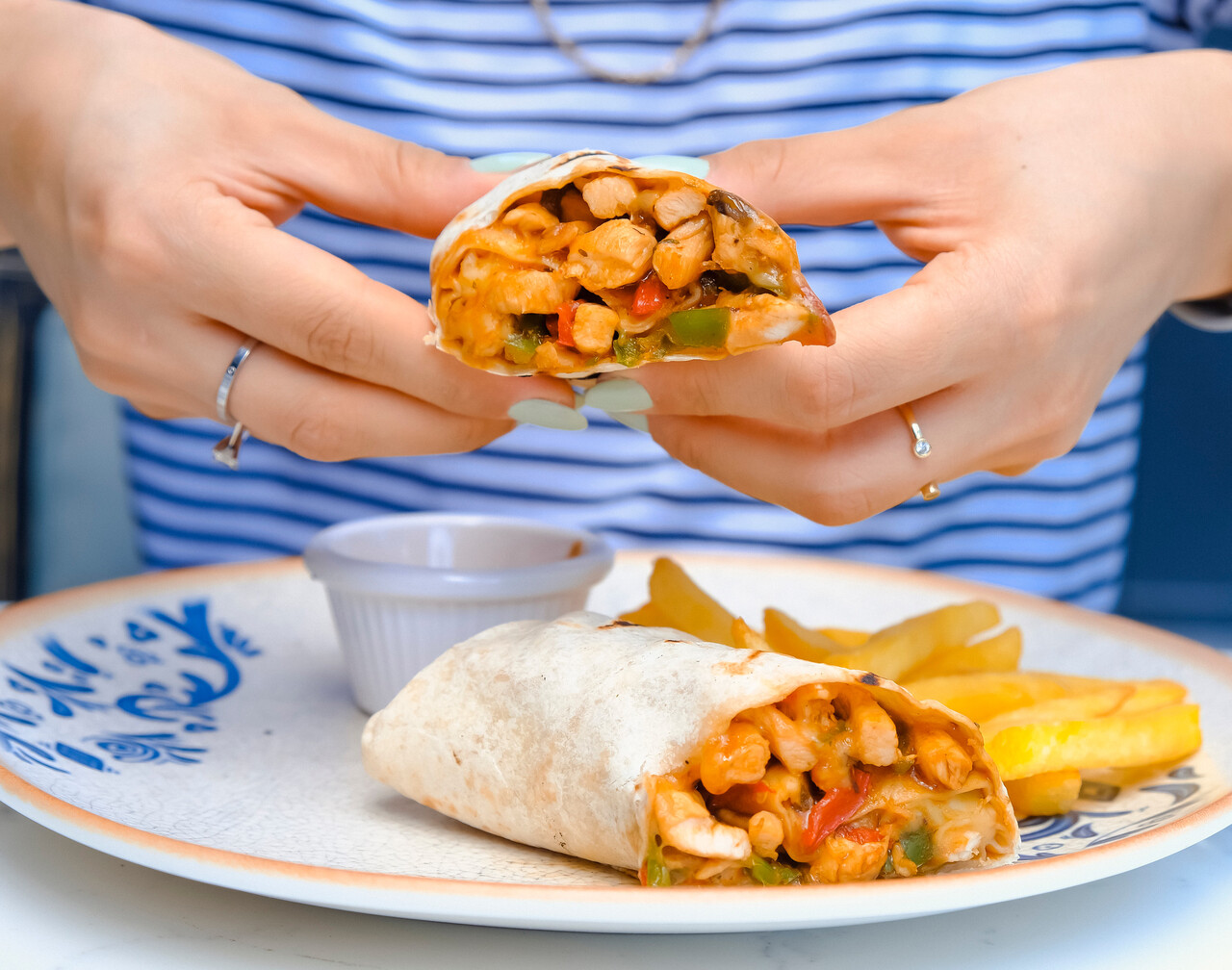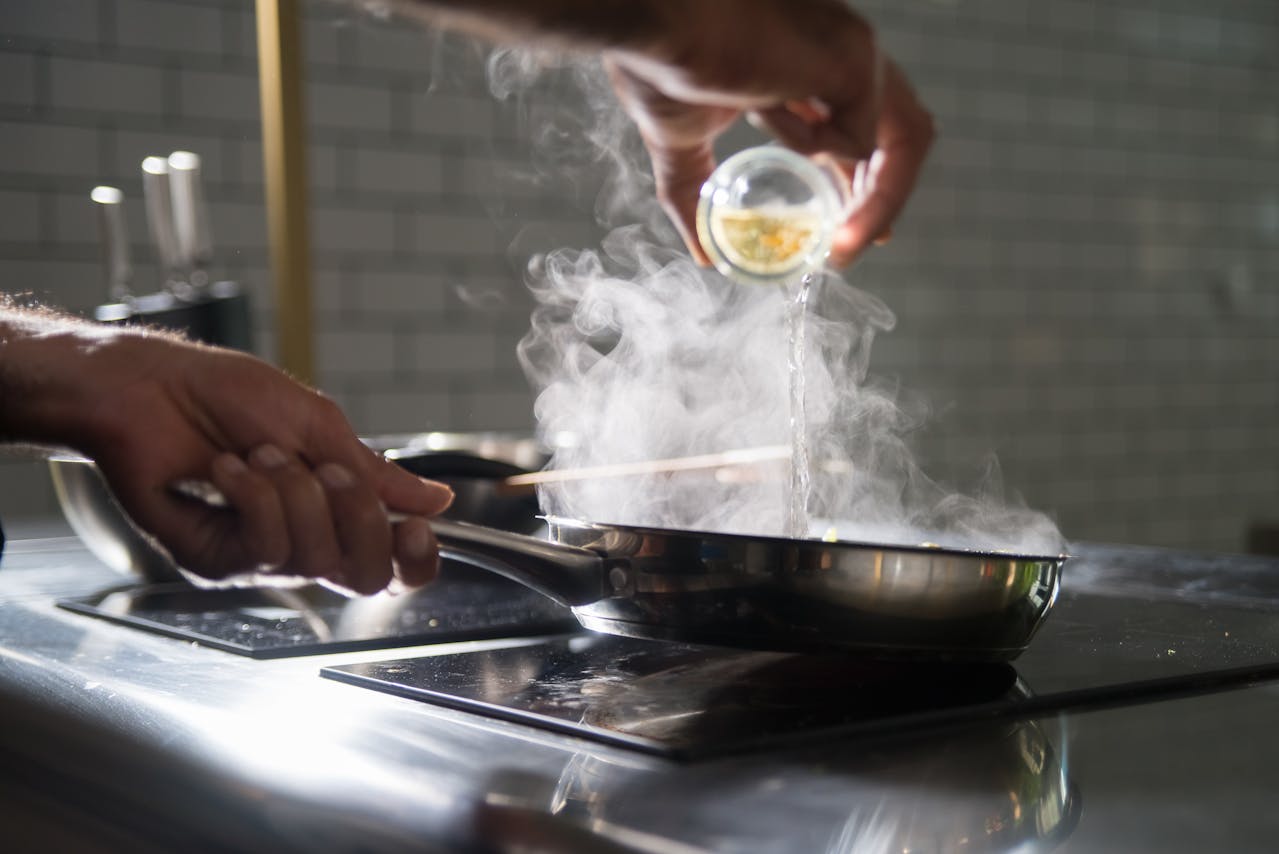The Science Behind Why We Love Fried Food

Fried food hooks us because it hits a precise sensory formula humans find nearly irresistible. That formula blends temperature, texture, and chemistry into a single moment of reward.
Start here: frying transforms ordinary ingredients into intensified versions of themselves. Heat concentrates flavors, creates crunchy contrasts, and turns mild starches and proteins into something aromatic and deeply satisfying. This introduction frames the rest of the piece: we’ll trace the biology, the chemistry, and the cultural forces that make fried food so compelling, and then pull it back to a practical takeaway for cooks who want the taste without unnecessary risk.
The Evolutionary Attraction to Fat and Calories
Our instincts favor energy density for a reason: fat is the most efficient fuel humans can store. In an environment of scarcity, seeking out high-fat, high-calorie items made survival more likely. That ancient preference didn’t evaporate when food became abundant. Instead, it became baked into the wiring of appetite and reward systems.
There’s a second piece to the evolutionary story: crunch and novelty. Early humans learned to associate crisp textures with freshness and edible safety. The combination of energy density and attention-grabbing sound is thus both adaptive and physiologically primed. Today, that inherited wiring meets modern food engineering and powerful sensory cues, and the result is a craving that’s hard to argue away.
The Physics and Chemistry of Frying

Here’s the core: very hot oil triggers Maillard chemistry, the same kind of browning that gives roasted meat and toasted bread their complex flavors. Proteins and sugars react to create an array of new molecules. Those molecules smell like roast, caramel, and toasted nuts; in short, they signal “rich” to the brain.
Those volatile compounds are what you notice first when you bite into something fried. They are also what make fried food more complex than the raw ingredients would suggest.
Water Loss and Oil Uptake
Frying is a controlled dehydration. Moisture near the surface vaporizes rapidly, driving outward and creating a dry, crisp crust. That crust traps internal steam briefly, which cooks the interior gently. Meanwhile, some oil migrates into spaces left behind by evaporated water.
The net effect is a dual texture: an interior that’s cooked through and moist, and an exterior that’s dry and crunchy. That contrast is a large part of the pleasure.
Lipid Oxidation and Aroma Development
Fast heating also oxidizes certain fats, producing aroma compounds that our noses register as savory, toasty or even slightly nutty. Those aromas are powerful appetite triggers. But oxidation also generates compounds that can degrade nutrition or produce off-flavors if the oil is reused or overheated, which is the trade-off we’ll discuss later.
How Taste, Texture, and Sound Combine
Crunch is not decoration; it’s an amplifier. The crisp sound provides instant feedback to the brain that something is fresh and intact. That auditory cue focuses attention on the mouth and enhances perceived freshness and satisfaction.
When a chip or piece of fried chicken cracks just right, the brain interprets that as a signal of high quality. That’s partly learned and partly hardwired. The physics of brittle versus flexible structures explains why certain coatings crack with more satisfying noise.
The Bliss Point: Salt, Fat, and Sugars
Fried foods often hit a sweet spot where fat, salt, and simple carbohydrates meet. That “bliss point” balances pleasure without tipping into displeasure. Fat carries flavors, salt sharpens them, and small sugars created by browning add complexity.
The combination is engineered by chefs and food developers, but it also arises naturally from the chemistry of frying. The result is food that is easy to like and hard to stop eating.
The Brain’s Reward Systems at Play
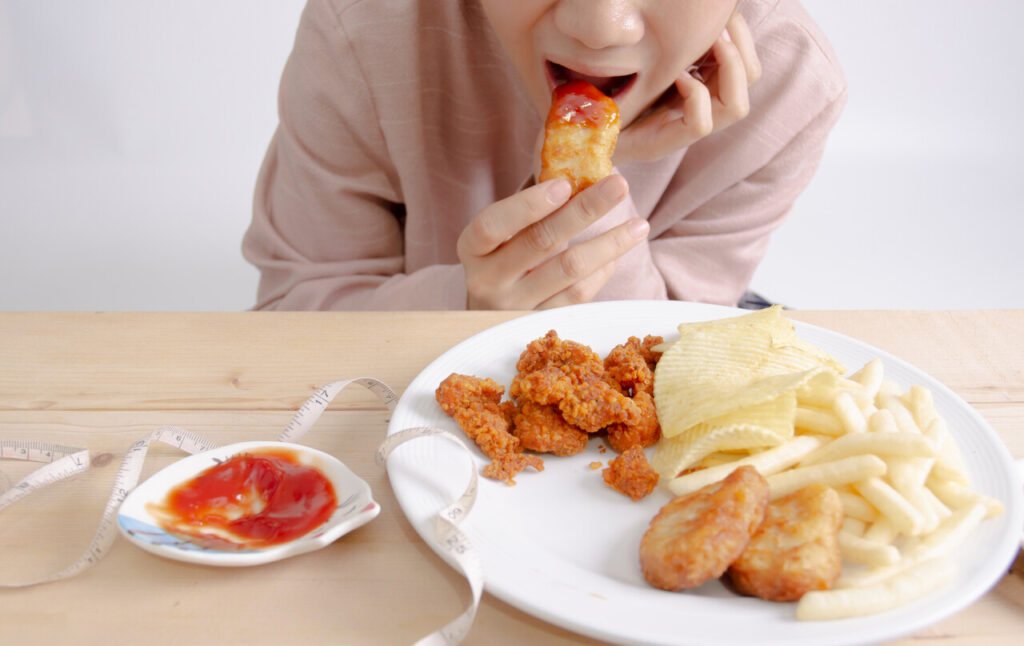
The first bite of fried food triggers reward circuits. Dopamine signals reinforce behaviors that once promoted survival, and eating high-fat, tasty food is one of those signals. Smell and sight alone can activate this system before food is even consumed.
This neural reinforcement is why fried items can feel uniquely pleasurable and why repetition creates habit. The brain tags the experience as valuable, which increases the likelihood of seeking it again.
Emotional states modulate cravings. Stress or low mood tends to push people toward high-reward foods. Fried comfort foods are often paired with nostalgia, social rituals or festive settings, which amplifies their emotional pull.
That’s why fairs, late-night diners, and game days produce surges in fried-food consumption. The context matters as much as the chemistry.
The Impact of Oil Type and Technique on Flavor and Health
Different oils bring different flavor profiles and stability. Neutral oils let the fried item’s natural flavors shine; flavorful oils like peanut or sesame impart their own notes. Smoke point matters because overheating oil creates bitter or burnt aromatics and speeds decomposition.
Choosing the right oil and using fresh, properly heated oil reduces off-flavors and keeps the chemistry favorable for eating.
Technique Shapes Outcome
Temperature control, coating composition, and frying time determine how much oil is absorbed and which reactions dominate. A too-low temperature creates sogginess and high oil uptake. Too hot, and the crust burns before the interior cooks.
Good technique produces the crispy exterior and tender interior we love while minimizing unnecessary oil uptake and harmful breakdown products.
Health Implications of Fried Food
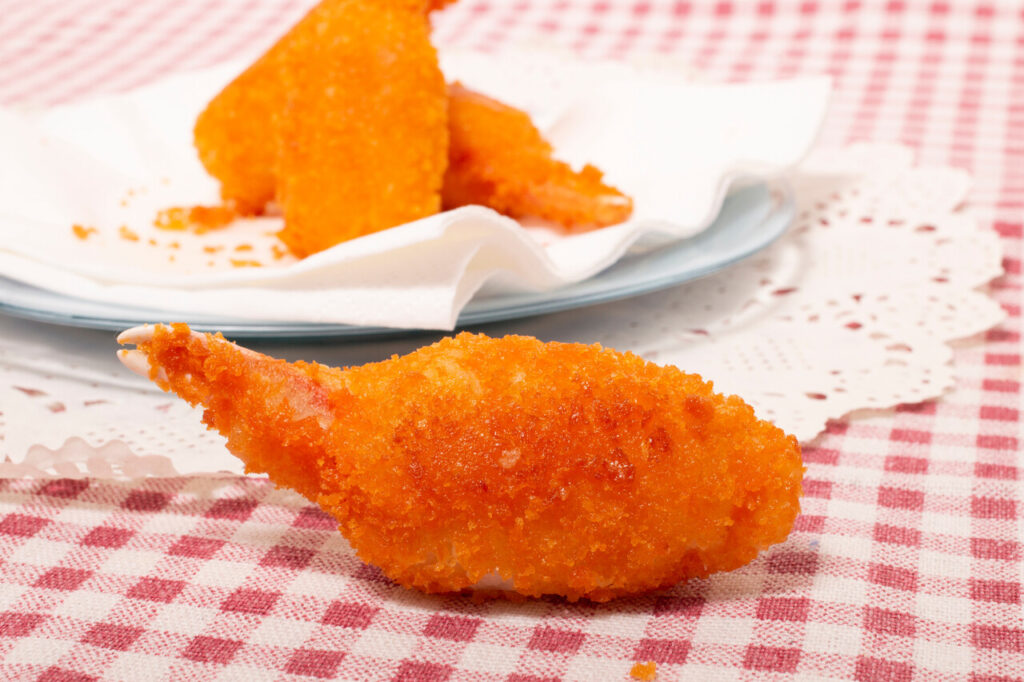
Regular consumption of heavily fried food is associated with health risks such as higher odds of cardiovascular disease and metabolic issues. Some of that risk stems from trans fats, repeated oil degradation, and excessive calorie density.
That said, occasional fried treats, prepared with stable oils and sensible portioning, carry far less risk than daily, high-intake patterns. Context and frequency are the critical factors.
Specific Chemical Concerns
High-temperature cooking can produce compounds like acrylamide in starchy foods and oxidized lipids in degraded oils, both of which have been linked to health concerns. Reused oil increases these byproducts.
Practical mitigation includes avoiding repeatedly reused oil, keeping temperatures in the recommended range, and favoring oils with good oxidative stability.
Why Culture, Emotion, and Season Play a Role
Fried food is woven into rituals: fairs, family meals, celebrations, and late nights. Those occasions attach stories and memories to specific tastes and textures, which strengthen preferences.
Seasonality and context amplify desire. Cold weather, holidays, and communal gatherings raise the appeal of warm, hearty fried dishes. That cultural layering makes fried food more than just chemistry; it becomes shorthand for comfort and connection.
Practical Takeaways for the Home Cook
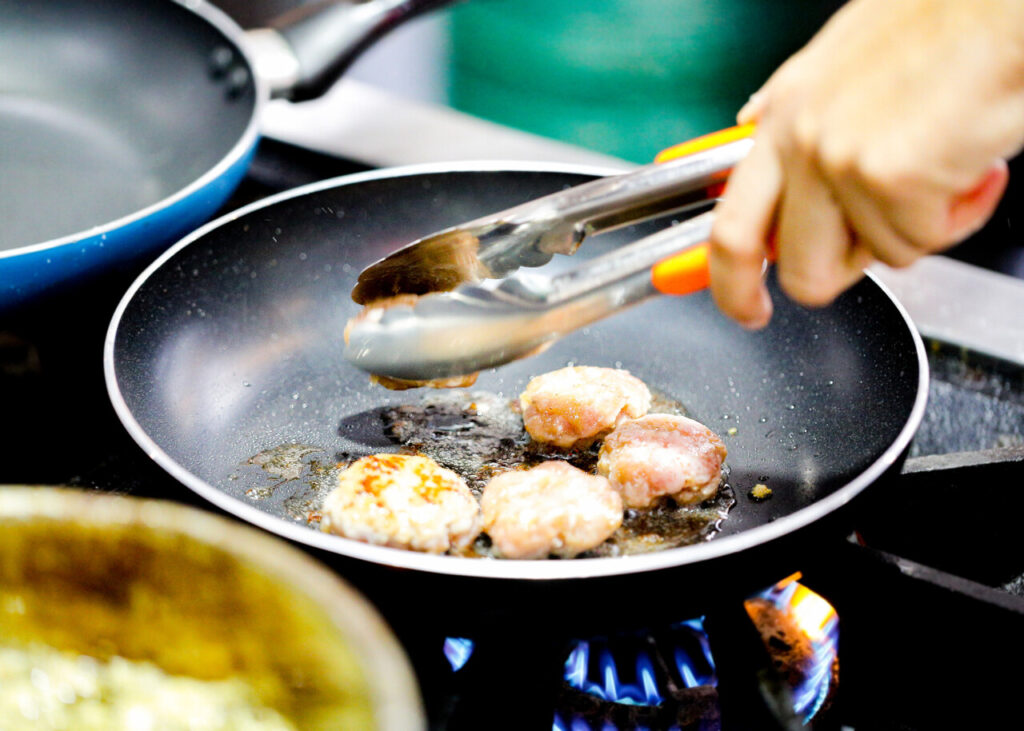
If you want the fried-food experience with fewer downsides, choose oils with higher oxidative stability, control temperature, and avoid frequent oil reuse. Use coatings that promote crisping without excessive oil absorption, such as light batters or panko.
Portion control and sharing help too. Splitting a treat reduces caloric load while preserving the sensory payoff. Finally, think of frying as one tool among many. Employ it intentionally for moments when flavor and texture matter most.
Apply Science to Improve Results
Understand the basic formulas: moisture drives oil uptake; heat drives Maillard flavor; salt and acid balance richness. With those mechanics in mind, you can recreate much of the pleasure with smarter choices, and you’ll end up with food that tastes better and behaves more predictably.
References
- Why Does Fried Food Taste So Good? – pitco.com
- The Chemistry Behind Fried Foods: How Frying Affects Flavor, Texture, and Health? – longdom.org

